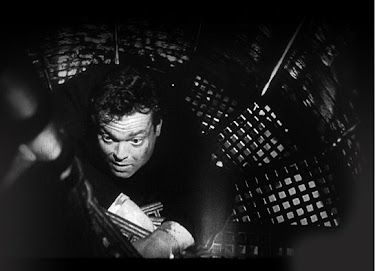Written by: Fredric Brown (story), John Paxton, Ben Bengal, Ray Spencer
Starring: Pat O'Brien, Claire Trevor, Herbert Marshall, Ray Collins, Wallace Ford, Dean Harens, Damian O'Flynn
 Pat O'Brien is typically known for playing priests, the level-headed foil for James Cagney's explosive gangster. In other words, he's usually the least-interesting character in the film. Crack-Up (1946) marks a welcome change-of-pace for the actor. No longer is O'Brien the calm, collected cleric, but a confused art critic at the end of his rope, doubting his own sanity as he battles murder and conspiracy. He perhaps isn't perfect for the role – the film's lurid moments would have been even more lurid had the lead actor been able to act more deranged – but O'Brien receives good supporting back-up from Claire Trevor, Herbert Marshall and Ray Collins. Director Irving Reis (best known for his "Falcon" series, though he also co-directed the annoyingly manipulative Hitler's Children (1943) with Edward Dmytryk) does well to develop the film's mood, not afraid to dabble in a bit of surrealism to help translate the mental confusion and degradation of his main protagonist. There's also a little Freudian psychoanalysis in there, as was popular at the time, but the distraction it causes to the story is only an afterthought.
Pat O'Brien is typically known for playing priests, the level-headed foil for James Cagney's explosive gangster. In other words, he's usually the least-interesting character in the film. Crack-Up (1946) marks a welcome change-of-pace for the actor. No longer is O'Brien the calm, collected cleric, but a confused art critic at the end of his rope, doubting his own sanity as he battles murder and conspiracy. He perhaps isn't perfect for the role – the film's lurid moments would have been even more lurid had the lead actor been able to act more deranged – but O'Brien receives good supporting back-up from Claire Trevor, Herbert Marshall and Ray Collins. Director Irving Reis (best known for his "Falcon" series, though he also co-directed the annoyingly manipulative Hitler's Children (1943) with Edward Dmytryk) does well to develop the film's mood, not afraid to dabble in a bit of surrealism to help translate the mental confusion and degradation of his main protagonist. There's also a little Freudian psychoanalysis in there, as was popular at the time, but the distraction it causes to the story is only an afterthought.
The role of WWII in shaping the film noir style should not be underestimated. In Crack-Up, combat veteran George Steele (O'Brien) remarks that his greater fear in the trenches was that his mind might unexpectedly snap "like a tight violin string." These combat-related fears are here transcribed into a society ostensibly recovering from the war, suggesting that the shadow of the twentieth century's most costly campaign was still bearing over America, a sinister spectre of uncertainty and disarray. The film's undisputed centrepiece, though it is never adequately explained, is Steele's recollection of a train crash, a sequence that almost suggests an episode of "The Twilight Zone." As Steele watches the blazing beams of an oncoming train, time appears to stand still. He sits transfixed, calm and emotionless, a deer in the headlights. In classic film noir fashion, both he and the audience know what is about to happen, but all are powerless to stop it. The train barrels towards its predestined fate, a blistering collision of light and flames. Or does it?
Perhaps drawing some inspiration from Lang's Scarlet Street (1945), this film noir concerns itself with the art of art fraud and forgery. The filmmakers' approach to the topic is strictly populist. At the beginning of the film, art critic Steele gives a lecture that openly denigrates the booming popularity of surrealism and "modern art," dismissing the style as being of use only to snobbish social-climbers {an unfair view, since Hitchcock had employed the services of Salvador Dali just one year earlier for Spellbound (1945)}. It is these very same snobs who have planned an elaborate scheme to replace masterpiece canvasses (titled "Gainsborough" and "The Adoration of the Kings," respectively) with worthless replicas, before destroying the copies – not for monetary gain, but because they're snobs, and would like to have the classic works of art all to themselves. If all of Crack-Up was as lurid as the opening sequence and train-wreck flashback, then Irving Reis would have had a masterpiece on his hands. As it is, we are left with an entertaining if occasionally stodgy thriller.
7/10
Currently my #6 film of 1946:
1) It’s A Wonderful Life (Frank Capra)
2) The Big Sleep (Howard Hawks) *
3) Duel in the Sun (King Vidor)
4) Notorious (Alfred Hitchcock) *
5) The Locket (John Brahm) *
6) Crack-Up (Irving Reis) *
7) The Dark Mirror (Robert Siodmak) *
8) The Blue Dahlia (George Marshall) *
9) Dragonwyck (Joseph L. Mankiewicz)
10) A Night in Casablanca (Archie Mayo)





_poster.jpg)


No comments:
Post a Comment